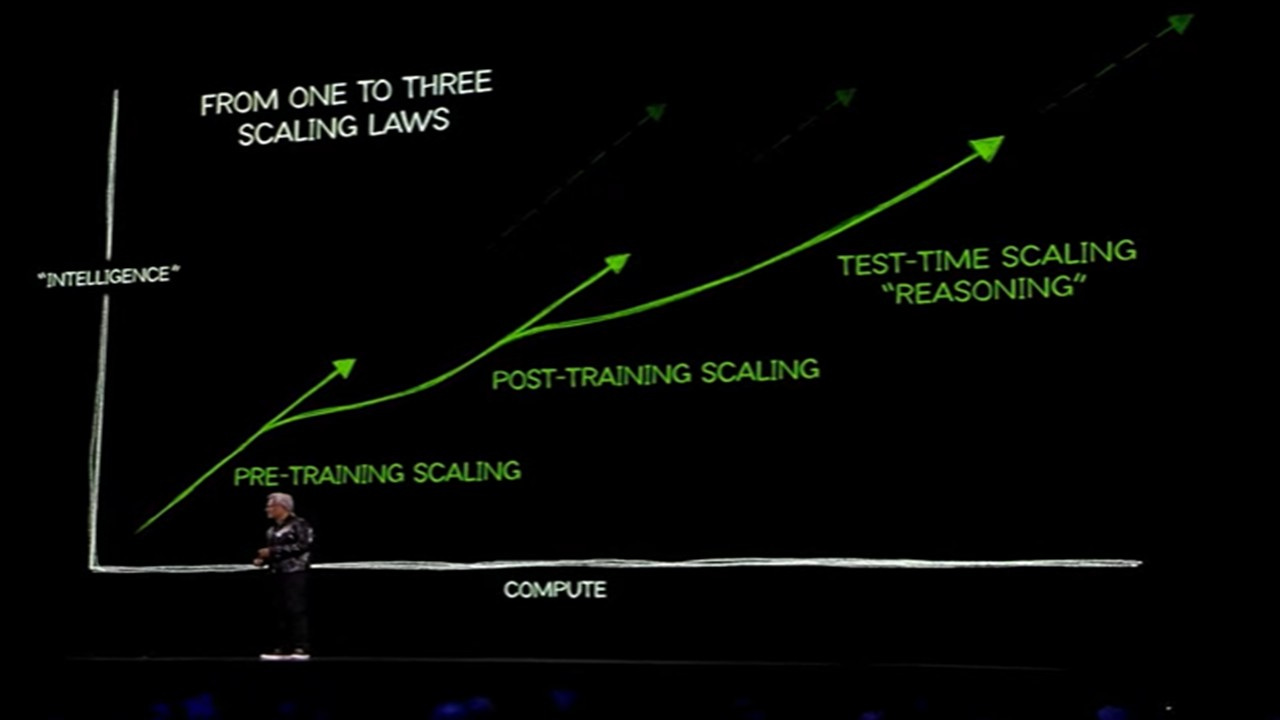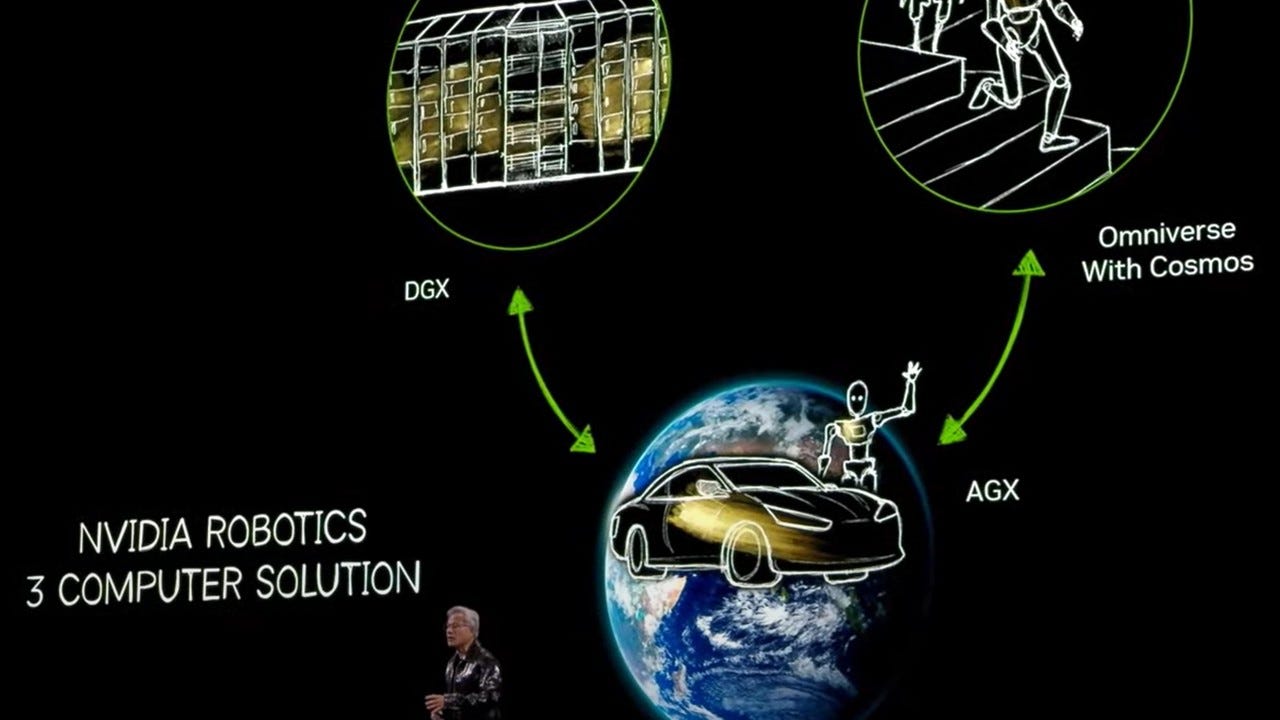Nvidia CEO Jensen Huang kicked off the CES 2025 on January 6 in Las Vegas and stunned the audience by presenting an AI supercomputer as small as a MiniMac before the end of the keynote speech.
According to Nvidia, Project Digits, the personal AI supercomputer on which Nvidia collaborated with Taiwan’s SoC leader MediaTek on the CPU and connected it chip-to-chip with NVLink to the Blackwell GPU is sold for $3,000 and is expected to start shipping in May, just in time for Computex.
Echoing Bill Gates’ vision of placing a computer on every desk, Jensen Huang aims to "put an insane AI supercomputer on every desk," signaling the dawn of an AI revolution akin to the transformative era of the PC and the internet.
If this moment did not make Americans in the stadium and those watching the streaming feel proud, I wonder when.
The effort of Project Digits, as Huang referred to it as a secret chip, started 10 years ago. Who would have imagined that humankind's semiconductor manufacturing capability could reach the level of producing AI supercomputing chips so small to fit in a small box on a desk 10 years ago? Huang’s vision and Nvidia staff’s superb execution in collaboration with all partners (at least MediaTek, TSMC, and all other partners who provided the materials, packaging, and assembly work) made it possible.
For those who did not have time to watch the keynote speech, here is a summary of the key products and their applications announced by NVIDIA CEO Jensen Huang during his CES 2025 keynote, compiled by ChatGPT:
1. GeForce RTX 50 Series (Blackwell Architecture)
Product Highlights: The new RTX 50 Series GPUs boast 92 billion transistors, 4 petaflops of AI performance, and innovative neural texture compression and material shading.
Applications: Enables next-gen gaming with real-time ray tracing and AI-driven frame generation (DLSS), as well as high-efficiency content creation.
2. AI-Driven Supercomputing (Blackwell Systems)
Product Highlights: Advanced NVLink systems with 72 interconnected Blackwell GPUs delivering 1.4 exaflops of AI performance and 1.2 petabytes/second memory bandwidth.
Applications: Accelerates the training and inference of massive AI models, supports scaling laws for AI advancement, and powers data centers for applications like generative AI.
3. Agentic AI Development
Products: NVIDIA NeMo and NVIDIA NIMS.
Applications:
NeMo: AI agent training tailored to enterprise needs, allowing companies to customize AI assistants for unique processes and languages.
NIMS: Pre-trained AI microservices that simplify integration into enterprise IT systems.
4. Llama Nematron Suite
Product Highlights: Fine-tuned enterprise versions of Meta's Llama 3.1 models.
Applications: High-performance AI for industries like finance, healthcare, and education, enabling advanced reasoning and response generation.
5. NVIDIA Cosmos (World Foundation Model)
Product Highlights: A platform designed to understand physical dynamics, trained on 20 million hours of video.
Applications:
Robotics and industrial AI development.
Synthetic data generation for training AI models.
Enhancing simulation accuracy in robotics and autonomous vehicles.
6. Autonomous Vehicles and Robotics
Products: NVIDIA Drive Thor (robotics processor) and Isaac Groot platform.
Applications:
Thor: Powers autonomous driving with advanced sensor processing and AI reasoning.
Isaac Groot: Accelerates the training and deployment of humanoid robots and autonomous machines via synthetic motion generation.
7. AI-Optimized PCs
Product Highlights: AI-enabled PCs based on Windows Subsystem for Linux 2 (WSL2) and CUDA optimization.
Applications: Brings generative AI capabilities to desktops for enhanced productivity, creative workflows, and real-time 3D generation.
8. Project Digits (Compact AI Supercomputer)
Product Highlights: A desktop AI supercomputer powered by a new Grace Blackwell chip.
Applications: Democratically delivers AI supercomputing power for small labs, startups, and professionals.
9. Digital Twins and Omniverse Integration
Applications:
Industrial Automation: Enhances efficiency in warehouses and factories via real-time simulation and optimization.
Autonomous Vehicles: Facilitates realistic, large-scale simulation for training AI driving models.
Jensen Huang’s CES 2025 keynote underscored NVIDIA's relentless pursuit of innovation. It seamlessly blends cutting-edge AI, high-performance computing, and real-world applications. From revolutionizing gaming and robotics to powering next-generation autonomous systems and enterprise AI, NVIDIA is crafting a future where intelligence meets efficiency. The next era of AI supercomputing is here, and NVIDIA shows everyone today that it is at the heart of it all.







